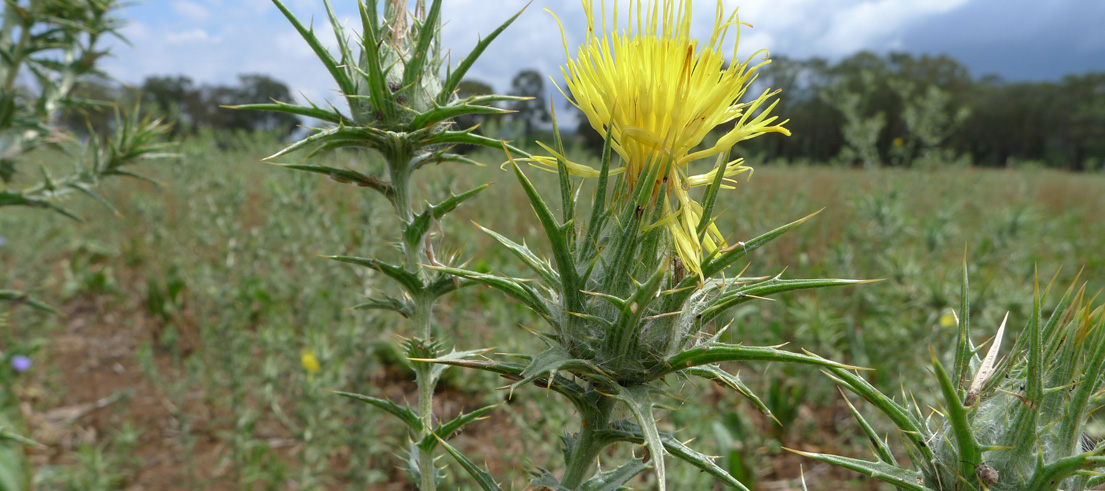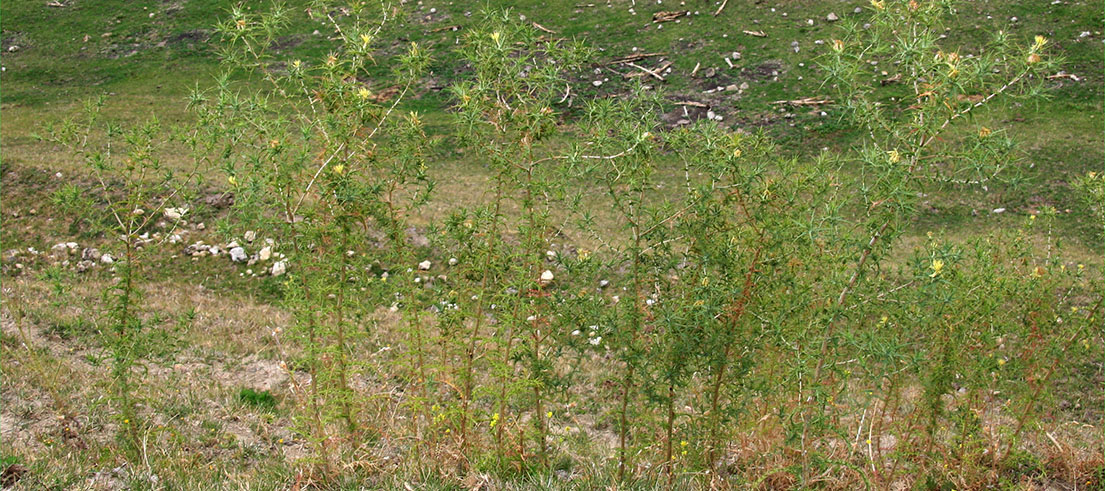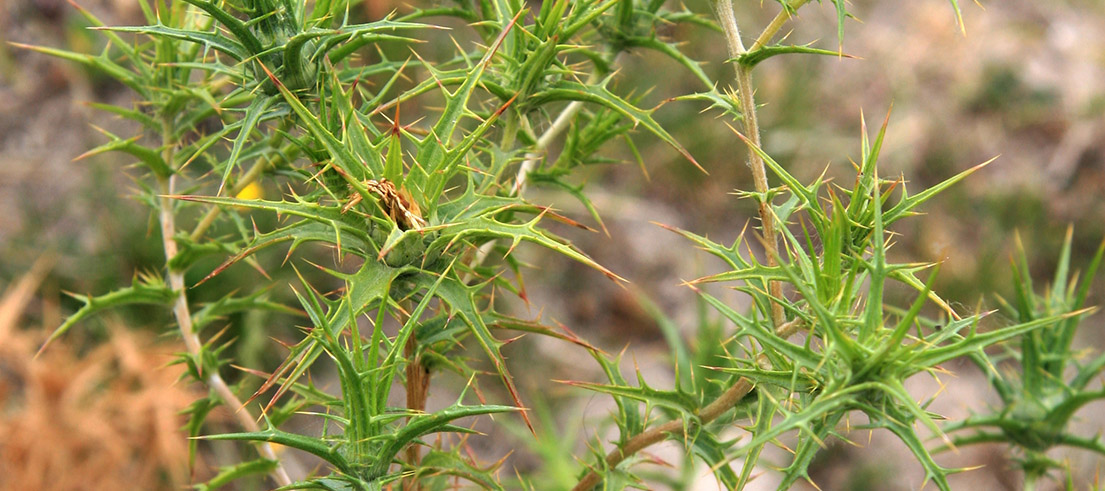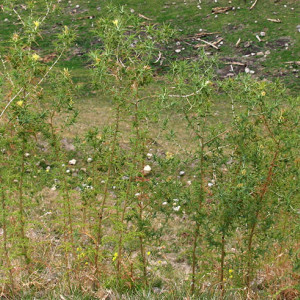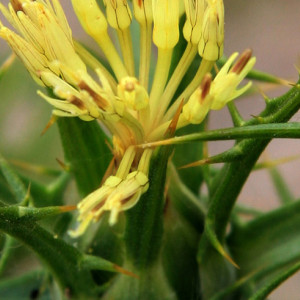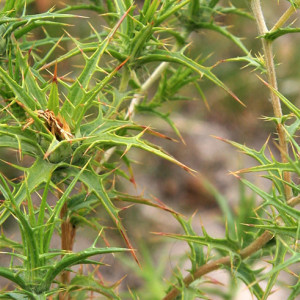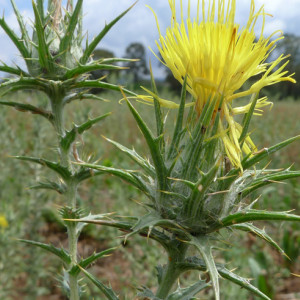An upright annual herb no taller than 1m. Prickles attach to and injure animals and it competes with crops and desirable pasture species.
Description
- Taproot is shallow.
- Stems arise from rosette and are woody, initially single and then branching.
- Leaves are glossy, dark green and spiny.
- Flowers are yellow with purplish veins and bear prickles below.
- Seeds are dispersed by gravity, wind and attachment to livestock.
- Habitats include pastures, wastelands, and open or disturbed sites.
What you need to know
Competes with desirable pasture species, impedes stock movement and injures grazing animals. Unpalatable to stock. Competes with crops and impedes harvesting equipment. Likely to be a reservoir of crop pathogens.
Management approach
This is a declared pest managed under the Canterbury Regional Management Plan 2018 – 2038 (PDF file, 10.6MB) within the sustained control programme.
Sustained control
Pests in the sustained control programme vary greatly in their distribution across the region. Some are found in low numbers, while others are already well-established pests. The intention of the sustained control programme is to reduce the impact on values and spread of a pest onto neighbouring properties.
The community should make us aware of any saffron thistle plants in Waitaha/Canterbury. We will work with affected landowners to undertake control of saffron thistle.
Rules
Any species declared a pest cannot be sold or be in a place where plants are being sold. Pest plants cannot be propagated, bred, multiplied, communicated, released, caused to be released, or otherwise spread.
Control
Do not attempt to undertake control of saffron thistle yourself. Report any sightings to us.
Safety notes
Plant has spines.

